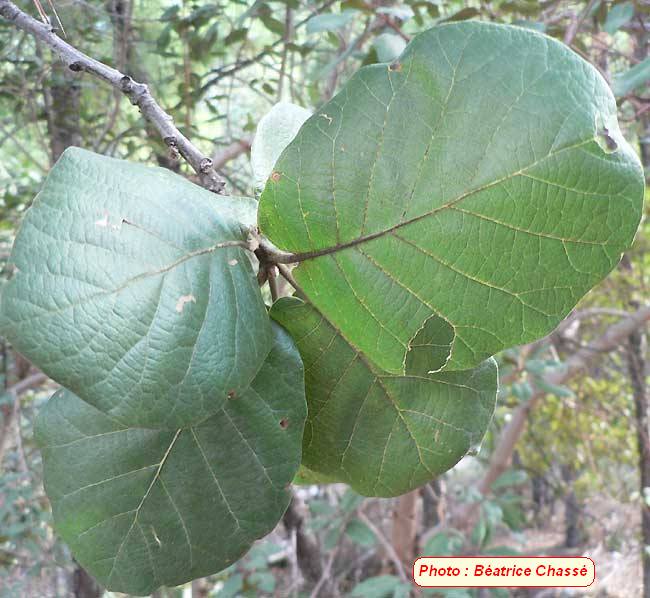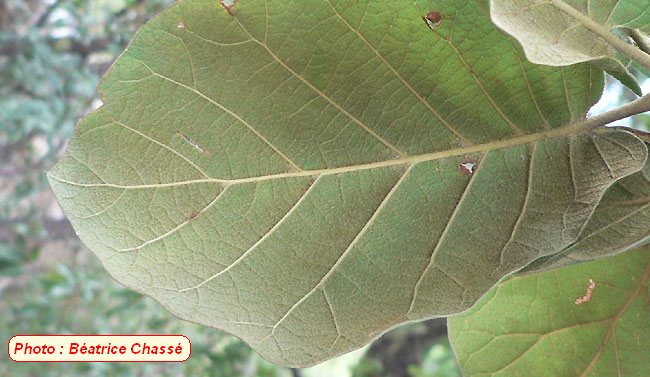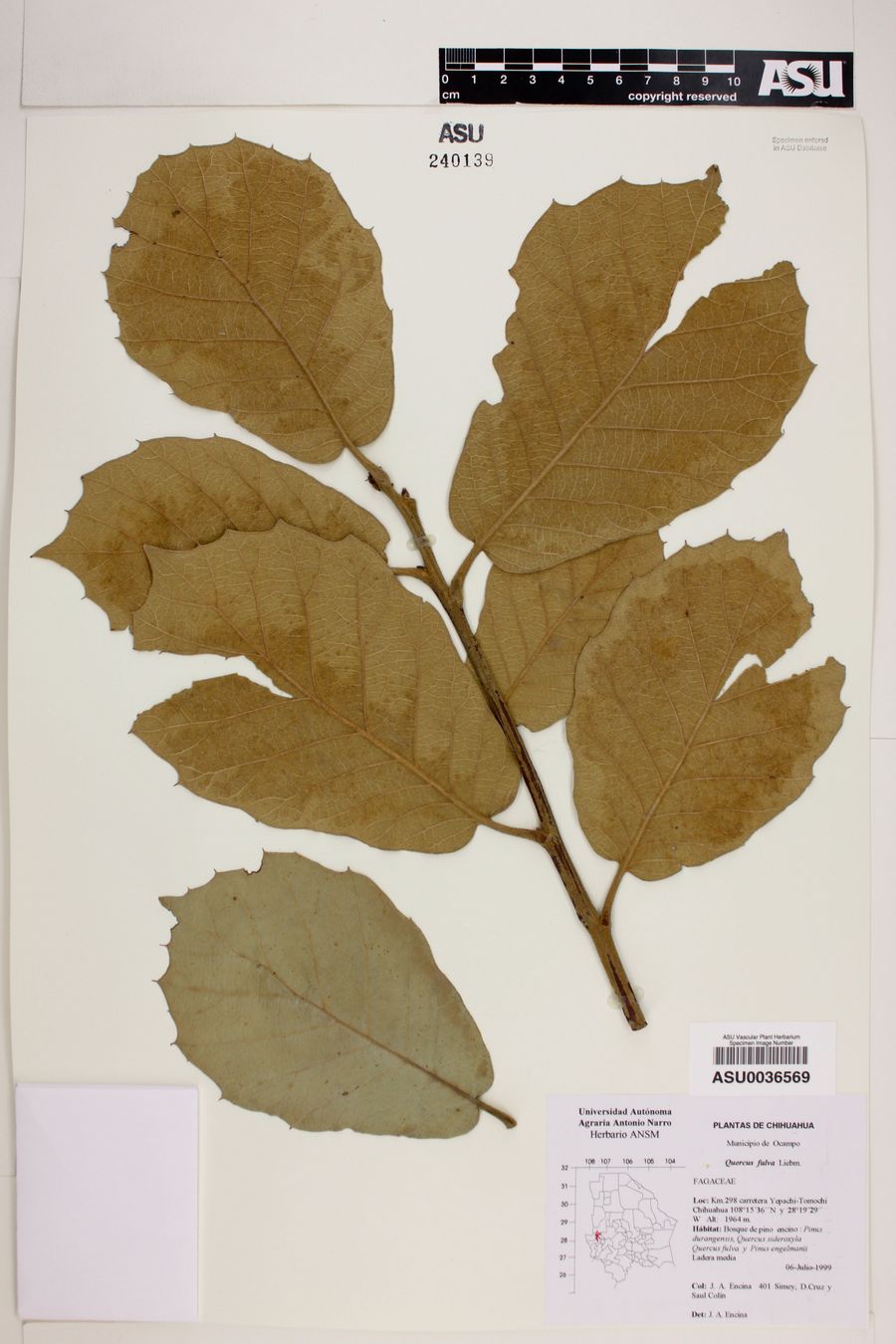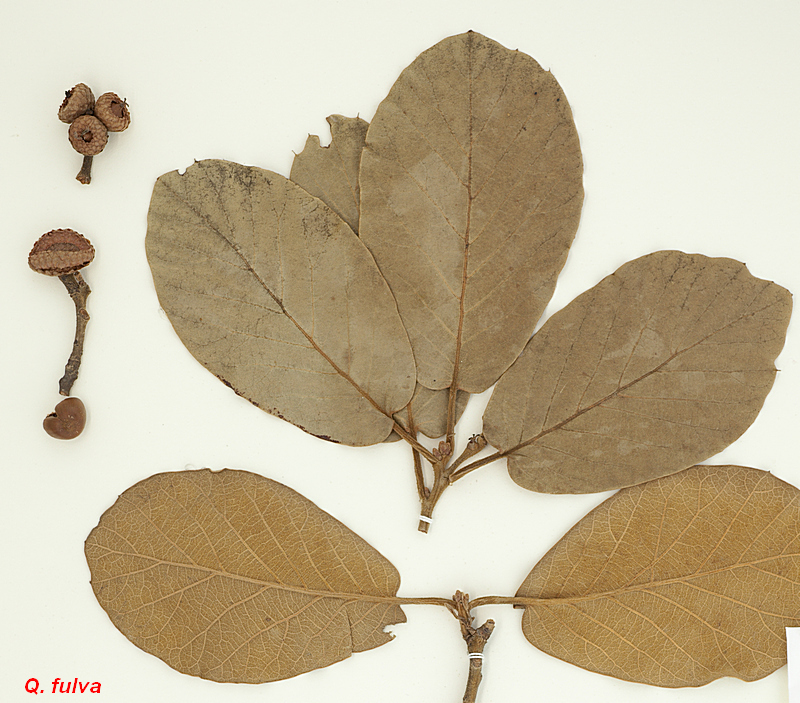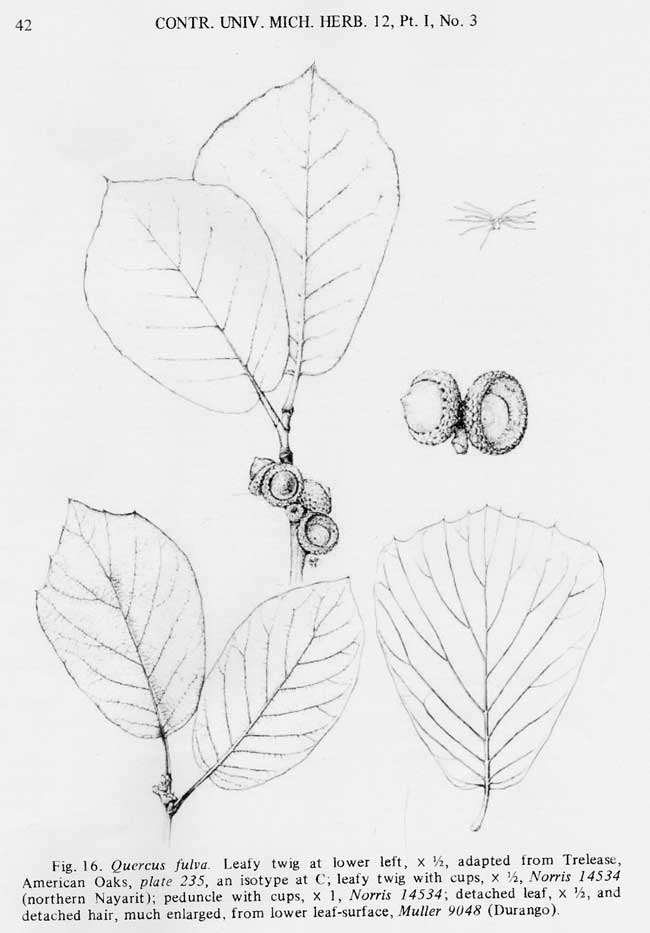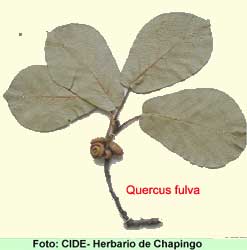| Quercus fulva | |
| Author |
Liebm. 1854 Overs. Kongel. Danske Vidensk. Selsk. Forh. Medlemmers Arbeider 1854: 183 Diagnosis here |
| Synonyms | rosei Trel. 1924 Diagnosis here |
| Local names | |
| Range | Mexico (Coahuila, Jalisco, Sinaloa, Nayarit, Durango, Chihuahua); 1800 - 2900 m; |
| Growth habit | 3-10 m; trunk
0.2-0.4 m in diameter; |
| Leaves | 8-14 x 4-9 cm;
deciduous; stiff, leathery; underside concave; broadly elliptic, oboval,
or oblong-oboval; apex broadly rounded to subacute, aristate; base rounded
or cordate; margin flat, usually entire or sometimes with 1-10 pairs of
bristle-tips ; light grey-green above, slightly lustrous, glabrous except
hairs at the base of midrib, with impressed veins; beneath woolly and
tawny, with yellowish glandular hairs covered with a dense pubescence
made of sessile, multiradiate, 10-25 rays trichomes 0.3 mm long, not easy
to remove, and stipitate fasciculate hairs; veins prominent beneath, visible
in spite of the hairs; when unfolding, both surfaces are tawny; epidermis
bullate; 10-13 vein pairs straight or slightly curved, often slightly
impressed above; petiole rusty pubescent, 1-2 cm long; |
| Flowers | pistillate flowers 1-3 at the tip of a short, thick, tomentose peduncle; |
| Fruits | acorn 8-12 mm;
ovoid or subglobose; solitary or 2-3 together, on 1-1.5 cm long stalk;
enclosed 1/2 by cup; cup shallow, 13-18 mm in diameter, with rolled under
rim and pubescent scales widenned at base; maturing in 2 years; |
|
Bark, twigs and |
bark ridged, dark grey; twig 2-4 mm in diameter, densely yellow tomentose during several years; bud ovoid, pointed, pubescent, 2-5 mm long; stipules 4-6 mm long, linear, sometimes persistent around the terminal buds; |
| Hardiness zone, habitat | not quite hardy; |
| Miscellaneous | --
A. Camus : n° 303; -- Sub-genus Quercus, section Lobatae, Series Erythromexicanae; -- Can be confused with Q. crassifolia, but crassifolia has stalked trichomes abaxially, and numerous glandular, golden trichomes -- Resembles as well Q. calophylla, which differs in having longer multiradiate hairs below (0,55 mm), no other type of non glandular trichomes below, the margin toothed, the rim of the acorn straight, the limb flat. |
| Subspecies and varieties |
|
| Pictures |
More pictures HERE
|

